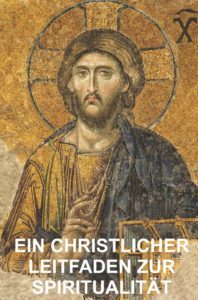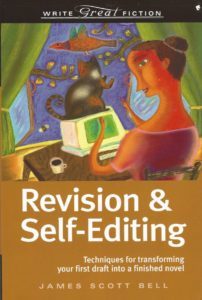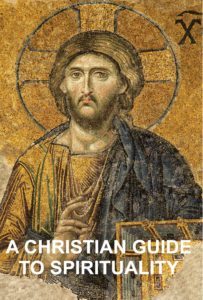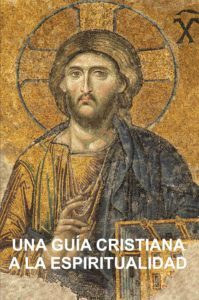Stephen W. Hiemstra's Blog, page 139
November 29, 2020
Gebetstag 2

Von Stephen W. Hiemstra
Himmlischer Vater,
Wir preisen dich dafür, daβ du Himmel und Erde geschaffen hast, um alles zu erschaffen, was ist, was war und was kommen wird; für die Schaffung von Dingen gesehen und unsichtbar.
Wir preisen Sie dafür, dass Sie sich selbst in der Person Jesu von Nazareth teilen. Unser Vorbild im Leben, Erlöser im Tod und Hoffnung für die Zukunft.
Wir preisen Sie für den Heiligen Geist, der bei uns anwesend ist und uns mit geistigen Gaben überschüttet und alle Dinge erhält.
Öffne unsere Herzen; erleuchten unseren Geist; Stärken unsere Hände in deinen Dienst.
In Jesu Namen, Amen.
Gebetstag 2
Siehe auch:
Glaubens Gebet
Andere Möglichkeiten, sich online zu engagieren:
Autoren Seite: http://www.StephenWHiemstra.net
Herausgeber Seite: http://www.T2Pneuma.com
Mitteilungsblatt: https://bit.ly/Thanks_2020
The post Gebetstag 2 appeared first on T2Pneuma.net.
November 27, 2020
Who is God?
The heavens declare the glory of God, and the sky above proclaims his handiwork. Day to day pours out speech, and night to night reveals knowledge. There is no speech, nor are there words, whose voice is not heard. ( Ps 19:1–3)
By Stephen W. Hiemstra
When I was young, I wanted to be a pilot. I learned to read a map, work with a compass, and navigate by the stars in pursuit of my goal. The idea that God would use a star to guide the wise men to the baby Jesus fascinated me. Equally fascinating is how God reveals himself to us in the creation story. The Bible starts telling us that: “In the beginning, God created the heavens and the earth.” (Gen 1:1) What do these simple words tell us about God?
The phrase—in the beginning—tells us that God is eternal. If creation has a beginning, then it must also have an end. This implies that creation is not eternal, but the God who created it must be. If our eternal God created time, both the beginning and the end, then everything God created belongs to God. Just as the potter is master over the pottery he makes, God is sovereign over creation (Jer 18:4-6). God did not win creation in an arm-wrestling match or buy it online or find it on the street, he created it—God is a worker (Whelchel 2012,7).
God’s sovereignty is reinforced in the second half of the sentence when it says: God created the heavens and the earth. Here heaven and earth form a poetic construction called a merism. A merism is a literary device that can be compared to defining a line segment by referring to its end points. The expression—heaven and earth—therefore means that God created everything. Because he created everything, he is sovereign over creation; and sovereignty implies ownership.
So, from the first sentence in the Bible we know that God is eternal and he is sovereign. We also know that he is holy. Why? Are heaven and earth equal? No. Heaven is God’s residence. From the story of Moses’ encounter with God in the burning bush (Exod 3:5), we learn that any place where God is becomes holy in the sense of being set apart or sacred. Because God resides in heaven, it must be holy. Earth is not. Still, God created both and is sovereign over both (Rev 4:11).
Genesis paints two other important pictures of God.
The first picture arises in Genesis 1:2. Here the breath, or spirit of God, is pictured like a bird hovering over the waters. Hovering requires time and effort suggesting ongoing participation in and care for creation. The Bible speaks exhaustively about God’s provision for us. Breath translates as Holy Spirit in the original languages of the Bible, both Hebrew (Old Testament) and Greek (New Testament).
The second picture appears in Genesis 2, which retells the story of creation in more personal terms. As a potter works with clay (Isa 64:8), God forms Adam and puts him in a garden. Then, he talks to Adam and directs him to give the animals names. And when Adam gets lonely, God creates Eve from Adam’s rib or side, a place close to his heart.
Genesis 1 and 2, accordingly, paint three pictures of God: 1. God as a mighty creator; 2. God who meticulously attends to his creation; and 3. God who walks with us like a friend. While the Trinity is not fully articulated in scripture until the New Testament, God’s self-disclosure as the Trinity appears from the beginning (Chan 1998, 41).
The Lord’s Prayer casts a new perspective on Genesis 1:1when Jesus says: “Your kingdom come, your will be done, on earth as it is in heaven.” (Matt 6:10) Because we are created in God’s image, we want our home to modeled after God’s.
References
Chan, Simon. 1998. Spiritual Theology: A Systemic Study of the Christian Life. Downers Grove, IL: IVP Academic.
Whelchel, Hugh. 2012. How Then Should We Work? Rediscovering the Biblical Doctrine of Work. Bloomington, IN: WestBow Press.
Who is God?
Also see:
Preface to A Christian Guide to Spirituality
Other ways to engage online:
Author site: http://www.StephenWHiemstra.net
Purchase Book: http://www.T2Pneuma.com
Newsletter: https://bit.ly/Thanks_2020
The post Who is God? appeared first on T2Pneuma.net.
¿Quien es Dios?
Los cielos proclaman la gloria de Dios, y la expansión anuncia la obra de sus manos. Un día transmite el mensaje al otro día, y una noche a la otra noche revela sabiduría. No hay mensaje, no hay palabras; no se oye su voz. (Salmo 19:1-3 LBA)
Por Stephen W. Hiemstra
Como una persona joven, quiere ser piloto. Aprendia que leer un mapa, trabajar con un compass, y siguen las estrellas por direcciones para perseguir mi sueno. La idea que Díos usaría una Estrella a guiar por magos al niño Jesús me encanta. Igualmente fascinante es cómo Dios se nos revela en la cuenta de la creación. La Biblia empezo diciendonos que: “En el principio creó Dios los cielos y la tierra.” (Génesis1:1 LBA) ¿Qué nos dicen estas sencillas palabras acerca de Dios?
La frase—en el principio—nos dice que Díos es eterna. Si la creación tiene un principio, entonces también debe tener un final. Se implicita es que creación no es eternal, sino que el Dios quien la creada necesita ser. Si nuestro Dios eternal creó el tiempo, tanto al principio y como al final, entonces todo lo que Dios creó es suya. Asi como el alfarero es senior sobre la vasija que hace, Dios es soberano sobre creacíon (Jeremias 18:4–8). Dios no ganó creacíon en un partido pulseada o comprar en línea o encontrar en la calle, la creó—Dios es un trabajador (Whelchel 2012, 7).
El soberano de Dios esta reforzada en la secunda parte de esta frase cuando la dice: creó Dios los cielos y la tierra. Allí las dos palabras, los cielos y la tierra, forma una estructura poetica llamado un merismo. Esta estructura hecho como a una línea definida por sus puntos extremos. Entonces, la expression, los cielos y la tierra, significa que Dios creó todo. Porque él creó todo, Díos es soberano creacíon, y la soberanía implica la propiedad.
Entonces, de la primera frase en la Biblia sabemos que Díos es eternal y soberano. Sabemos tambien que Díos es santo. ¿Porque? ¿Son el cielo y la tierra igual? No. El cielo es la residencia de Díos. De la historia de Moisés y su encuentra con Díos acerca de la zarza ardiente (Exodo 3:5), aprendimos que cualquiera lugar donde Dios es estaria santo en la sensacíon de apartada (dedicada) o sagrada (santificada). Porque Dios vive en el cielo, debe ser santo. La tierra no esta. Aún así, Díos los creó y es soberano sobre ambos (Apocalisis 4:11).
Génesis da dos otras imaginas importante de Díos.
La imágina primera viene en Génesis 1:2; aquí, el espiritu de Dios (o el aliento) es representaba como un aves que se movia sobre las aguas. Revoloteando require tiempo y esfuerzo que suguiere participacíon activa y cuido para la creacion. La Biblia habla extensivamente sobre Dios y su provision para nosotros—la provision de Dios. El aliento traduce como Espiritu Santo en los lenguas original de la Biblia—ambos Hebreos (Antiguo Testamento) y Griego (Nueva Testamento).
La imágina segunda aparece en Génesis 2, donde dijo la historía de creación en términos más personales. Como el alfarero trabaja con barro (Isaias 64:8), Díos forma Adán y lo puso en un jardin. Luego, él habla con Adán y lo dirige a dar nombres a los animales. Y cuando Adán era solo, Díos crea a Eva de una costilla o del lado de Adán—un lugar cerca de su corazon.
En consecuencia, Génesis 1 y 2 da tres imágines de Díos: 1. Díos como un creador poderosa; 2. Díos a quien cuida meticulosamente de su creación; y 3. Dios a quien camina con nosotros como un buen amigo. Mientras la Trinidad no esta articulado en la escritura hasta el Testamento Nuevo, la autorrevelación de Dios como la Trinidad aparece desde hace el principio (Chan 1998, 41).
La Oración del Señor da un perspective nuevo sobre Genesis 1:1 cuando Jesus dice: “Venga tu reino. Hágase tu voluntad, así en la tierra como en el cielo.” (Mateo 6:10 LBA) Porque estamos creado en la imagina de Dios, queramos lo mismo que nuestro hogar a estar como la casa de Dios en el cielo.
Referencias
Chan, Simon. 1998. Spiritual Theology: A Systemic Study of the Christian Life. Downers Grove, IL: IVP Academic.
Whelchel, Hugh. 2012. How Then Should We Work? Rediscovering the Biblical Doctrine of Work. Bloomington, IN: WestBow Press.
¿Quien es Dios?
Ver también:
Prefacio de La Guía Cristiana a la Espiritualidad
Otras formas de participar en línea:
Sitio del autor: http://www.StephenWHiemstra.net
Comprar Libro: http://www.T2Pneuma.com
Boletín informativo: https://bit.ly/Thanks_2020
The post ¿Quien es Dios? appeared first on T2Pneuma.net.
Wer ist Gott?

Von Stephen W. Hiemstra
Die Himmel erzählen die Ehre Gottes, und die Feste verkündigt seiner Hände Werk.
Ein Tag sagt’s dem andern, und eine Nacht tut’s kund der andern. (Ps 19:2-3)
Als ich jung war, wollte ich Pilot werden. Ich lernte, eine Karte zu lesen, mit einem Kompass zu arbeiten und an den Sternen vorbei zu navigieren, um mein Ziel zu erreichen. Die Idee, daβ Gott einen Stern benutzen würde, um die Weisen zum Jesuskind zu führen, faszinierte mich. Ebenso faszinierend ist, wie Gott sich uns in der Schöpfungsgeschichte offenbart. Die Bibel sagt uns: “Am Anfang schuf Gott Himmel und Erde.” (Gen 1:1) Was sagen uns diese einfachen Worte über Gott?
Die Phrase—am Anfang—sagt uns daβ Gott ewig ist. Wenn die Schöpfung einen Anfang hat, muβ sie auch ein Ende haben. Das bedeutet, daβ die Schöpfung nicht ewig ist, aber der Gott, wer die schöpfte, muβ sein. Dies impliziert, daβ die Schöpfung nicht ewig ist, sondern der Gott, der sie geschaffen hat, muβ sein. Wenn unser ewiger Gott die Zeit geschaffen hat, sowohl den Anfang als auch das Ende, dann gehört alles, was Gott geschaffen hat, zu Gott. Sowohl der Töpfer herrsche über den Topf der machte, Gott herrsche über der Schöpfung. So wie der Töpfer Herr über den Topf ist, die er herstellt, ist Gott souverän über die Schöpfung (Jer 18:4-6). Gott hat die Schöpfung nicht in einem Armdrücken gewonnen oder online gekauft oder auf der Straße gefunden, er hat die geschaffen—Gott ist ein Arbeiter (Whelchel 2012,7).
Gottes Souveränität wird in der zweiten Hälfte des Satzes gestärkt, wann es heißt daβ Gott Himmel und Erde geschaffen hat. Hier bilden Himmel und Erde eine poetische Konstruktion, die als ein Merismus bezeichnet wird. Ein Merismus ist ein literarisches Mittel, das mit der Definition eines Liniensegments unter Bezugnahme auf seine Endpunkte verglichen werden kann. Der Ausdruck—Himmel und Erde—bedeutet daher, daβ Gott alles geschaffen hat. Weil er alles geschaffen hat, ist er souverän über die Schöpfung; und die Souveränität impliziert Eigentum.
Aus dem ersten Satz der Bibel wissen wir also, daβ Gott ewig und souverän ist. Wir wissen auch daβ er heilig ist. Warum? Sind Himmel und Erde gleich? Nein. Der Himmel ist Gottes Residenz. Aus der Geschichte der Begegnung Mose mit Gott im brennenden Busch (Exod 3: 5) erfahren wir, daβ jeder Ort, an dem Gott ist, heilig wird, im Sinne sein getrennt oder heilig. Weil Gott im Himmel wohnt, muβ es heilig sein. Die Erde ist nicht. Dennoch hat Gott beide geschaffen und ist über beide souverän (Rev 4:11).
Genesis malt zwei weitere wichtige Bilder von Gott.
Das erste Bild entsteht in Genesis 1:2; Hier wird der Atem oder Geist Gottes wie ein Vogel dargestellt, der über dem Wasser schwebt. Das Schweben erfordert Zeit und Mühe, um eine kontinuierliche Teilnahme an und Pflege für die Schöpfung vorzuschlagen. Die Bibel spricht ausführlich über Gottes Versorgung für uns. Der Atem wird in der Originalsprache der Bibel als Heiliger Geist übersetzt, sowohl in Hebräisch (Altes Testament) als auch in Griechisch (Neues Testament).
Das zweite Bild erscheint in Genesis 2, in dem die Schöpfungsgeschichte persönlicher erzählt wird. Wie ein Töpfer mit Ton arbeitet (Isa 64: 8), formt Gott Adam und legt ihn in einen Garten. Dann spricht er mit Adam und weist ihn an, den Tieren Namen zu geben. Und wenn Adam einsam wird, erschafft Gott Eva aus Adams Rippe oder Seite, einem Ort, der ihm am Herzen liegt.
Genesis 1 und 2 malen dementsprechend drei Bilder von Gott: 1. Gott als mächtiger Schöpfer; 2. Gott, der sich akribisch um seine Schöpfung kümmert; und 3. Gott, der mit uns geht wie ein Freund. Während die Dreifaltigkeit erst im Neuen Testament vollständig in der Schrift artikuliert ist, erscheint Gottes Selbstoffenbarung als Dreifaltigkeit von Anfang an (Chan 1998, 41).
Das Beten des Herren wirft eine neue Perspektive auf Genesis 1:1 wann Jesus sagt: “Dein Reich komme. Dein Wille geschehe wie im Himmel so auf Erden.” (Matt. 6:10) Weil wir nach Gottes Bild geschaffen sind, möchten wir auch, daβ unser Zuhause nach dem Residenz Gottes nachempfunden ist.
Wer ist Gott?
Verweise
Chan, Simon. 1998. Spiritual Theology: A Systemic Study of the Christian Life. Downers Grove, IL: IVP Academic.
Whelchel, Hugh. 2012. How Then Should We Work? Rediscovering the Biblical Doctrine of Work. Bloomington, IN: WestBow Press.
Siehe auch:
Einleitung auf Ein Christlicher Leitfaden zur Spiritualität
Andere Möglichkeiten, sich online zu engagieren:
Autoren Seite: http://www.StephenWHiemstra.net
Herausgeber Seite: http://www.T2Pneuma.com
Mitteilungsblatt: https://bit.ly/Thanks_2020
The post Wer ist Gott? appeared first on T2Pneuma.net.
November 26, 2020
Thanksgiving Prayer 2020
 By Stephen W. Hiemstra
By Stephen W. Hiemstra
Heavenly Father,
All praise and honor be to you
Father of all Creation
for you have created us in your image,
an image that we can spend a lifetime growing into.
We confess that we are
unworthy of being your children
unwilling to give up our favorite sins and
unable to approach you, but for the blood of Jesus.
Yet, we thank you
for coming to us in spite of our broken and polluted state,
for granting us many talents and gifts, and
for making our salvation possible.
In the power of your Holy Spirit,
unite, guide, and heal our land,
forgive our division and hostility to one another, and
draw us closer to you day by day.
In Jesus’ precious name, Amen.
Thanksgiving Prayer 2020
Also see:
Preface to A Christian Guide to Spirituality
Other ways to engage online:
Author site: http://www.StephenWHiemstra.net
Purchase Book: http://www.T2Pneuma.com
Newsletter: https://bit.ly/Thanks_2020
The post Thanksgiving Prayer 2020 appeared first on T2Pneuma.net.
November 24, 2020
Bell Revises with Care

James Scott Bell. 2008. Revision & Self-Editing: Techniques for Transforming Your First Draft into a Finished Novel. Cincinnati: Writer’s Digest Books.
Review by Stephen W. Hiemstra
It is often asserted that writing is a right-brain (creative) activity and editing is a left-brain (analytical) activity. While I doubt that any writers have been observed under CAT scanning device, the observation has an intuitive appeal and is repeated ad nauseum in books on writing. In my case, I generally find myself plumbing the depths of books on writing mostly as I contemplate another round of editing, both to garner new insights and to gather motivation to jump into editing one more time. James Scott Bell writing books (see references) provide reliable fodder for both needs.
Introduction
In his book, Revision & Self-Editing: Techniques for Transforming Your First Draft into a Finished Novel, James Scott Bell describes how to use his book in two parts
“In Part 1: Self-Editing, we will be covering a broad range of fiction technique, with exercises—a sort of writing boot camp … [Part 2] offers a systematic approach to revising a novel.” (5)
Dedicated James Scott Bell fans will recognize Part 1 as an overview of different writing books that he has written previously and he covers much the same topics. The rubber hits the road with a splash in chapter 16, the Ultimate Revision Checklist, where he revisits each topic in Part 1 with specific advice on editing and revising manuscripts focusing on specific problems in those topic areas. If we read in Part 1 that “fiction is the record of how a character faces a threat or challenge” (18), then in Part 2 he advises us to “track the inner change in your character through the three acts” with a “character arc template” (219) that demonstrates how the character grows in response to the threat or challenge. There is method to the madness here.
Background and Organization
On his website, we read:
Jim has taught writing at Pepperdine University and at numerous writers conferences in the United States, Canada, Great Britain, Australia and New Zealand. He attended the University of California, Santa Barbara where he studied writing with Raymond Carver, and graduated with honors from the University of Southern California Law Center.
In addition to his writing books, he is known for writing thrillers, television appearances, and legal work.
Bell writes in sixteen chapters, divided into two parts:
Part One: Self Editing
A Philosophy of Self-Editing
Characters
Plot & Structure
Point of View
Scenes
Dialogue
Beginnings, Middles, and Ends
Show versus Tell
Voice & Style
Setting & Description
Exposition
Theme
Part Two: Revision
A Philosophy of Revision
Before You Revise
The First Read-Through
The Ultimate Revision Checklist (vi-vii)
These chapters are preceded by an introduction and followed by an epilogue, appendix, and Index. This book is part of the Write Great Fiction series published by Writer’s Digest Books.
Self-Editing
Bell asserts that 99.9 percent of self-published authors need to learn how to self-edit better. He defines self-editing as: “the ability to know what makes fiction work, so when you actually write (as in a first-draft) you’re crafting salable fiction.” (8) Because more than a million books are published annually and readership appears to be declining, writing is a highly competitive activity. Self-publishing has contributed to this outcome, which makes it unlikely that most authors will not be offered an editor to work with and bookshelf space on which to sell their books. Thus, good self-editing skills are a must for most writers.
Outside of the environment in which we labor, editing becomes necessary once a first draft is produced. If writing is a right-brain activity, then most first drafts will resemble a brainstorming with some structure. This implies that editing is required to develop characters, fill in descriptive details, and generally make things hold together. In my own novella project in September, on first read I found conflicting details about a minor character in my first draft, a product of my own poor memory—an obvious incentive to edit even my edits.
Revision
Bell observes: “Submitting a novel without rewriting is like playing ice hockey naked.” (192) In a nutshell, you can play hockey naked, but you probably don’t want to!
Bell sees professional authors as the one taking the long view: “Ultimate success involves a long curve of learning, working, failure, trying again, patience, and perseverance.” (194) Personally, I have found professional are the ones who are constantly learning new techniques and looking for mentors to ease the process. It is the difference between those seeking a job and those desiring a career—only the latter effectively learn the craft.
Assessment
James Scott Bell’s Revision & Self-Editing: Techniques for Transforming Your First Draft into a Finished Novel stands out as a good summary of his collective wisdom as a writer and a must-read for fiction authors. I especially enjoyed his advice to write a “pet the dog” beat to deeper the identity of you lead character. For Bell, writers are the ones who ceaselessly learn more about writing. What dog can’t you not pet?
Footnotes
https://www.jamesscottbell.com.
References
Bell, James Scott. 2004. Plot and Structure: Techniques and Exercises for Crafting a Plot that Grips Readers from Start to Finish. Cincinnati: Writer’s Digest Books. (review)
Bell, James Scott. 2014. How to Write Dazzling Dialogue: The Fastest Way to Improve Any Manuscript. Woodland Hills, CA: Compendium Press. (review)
Bell, James Scott. 2019. The Last Fifty Pages: The Art and Craft of Unforgettable Endings. Woodland Hills, CA: Compendium Press. (review.
Bell Revises with Care
Also see:
Books, Films, and Ministry
Other ways to engage online:
Author site: http://www.StephenWHiemstra.net
Publisher site: http://www.T2Pneuma.com
Newsletter: https://bit.ly/Thanks_2020
The post Bell Revises with Care appeared first on T2Pneuma.net.
November 23, 2020
Spirituality: Monday Monologues (podcast) November 23, 2020
 Stephen W. Hiemstra 2020 (Ken Burtram Photography)
Stephen W. Hiemstra 2020 (Ken Burtram Photography)By Stephen W. Hiemstra
This morning I will share a prayer and reflect on the Christian Spirituality. After listening, please click here to take a brief listener survey (10 questions).
To listen, click on this link.
Hear the words; Walk the steps; Experience the joy!
Spirituality: Monday Monologues (podcast) November 23, 2020
Also see:
Monday Monologue On March 26, 2018
Other ways to engage online:
Author site: http://www.StephenWHiemstra.net,
Publisher site: http://www.T2Pneuma.com.
Newsletter: https://bit.ly/Thanks_2020
The post Spirituality: Monday Monologues (podcast) November 23, 2020 appeared first on T2Pneuma.net.
November 22, 2020
Prayer Day 1
By Stephen W. HIemstra
Almighty Father:
thank you for the person of Jesus of Nazareth;
who lived as a role model for sinners;
who died as a ransom for sin;
and whose resurrection gives us the hope of salvation.
In the power of your Holy Spirit, inspire the words written and illumine the words read.
In Jesus’ name, Amen.
Prayer Day 1
Also see:
Believer’s Prayer
Other ways to engage online:
Author site: http://www.StephenWHiemstra.net
Purchase Book: http://www.T2Pneuma.com
Newsletter: https://bit.ly/Thanks_2020
The post Prayer Day 1 appeared first on T2Pneuma.net.
Oración Dia 1
Por Stephen W. Hiemstra
Padre Todopoderoso,
gracias por la persona de Jesús de Nazaret,
quien vivió como un modelo a seguir para los pecadores,
quien murió como un rescate por los pecados,
y cuya resurrección nos da la esperanza de salvación.
En el poder del Espíritu Santo, inspira las palabras escritas e ilumina las palabras leídas.
En el nombre de Jesús. Amén.
Oración Dia 1
Ver también:
Gospel as Divine Template
Otras formas de participar en línea:
Sitio del autor: http://www.StephenWHiemstra.net,
Comprar Libro: http://www.T2Pneuma.com.
Boletín informativo: https://bit.ly/Thanks_2020
The post Oración Dia 1 appeared first on T2Pneuma.net.
Gebetstag 1

Von Stephen W. Hiemstra
Allmächtiger Vater:
Danke für die Person Jesu von Nazareth;
die als Vorbild für Sünder lebten;
der als Lösegeld für die Sünde starb;
und dessen Auferstehung gibt uns die Hoffnung auf Erlösung.
Inspiriere in der Kraft deines Heiligen Geistes die geschriebenen Worte und erleuchte die gelesenen Worte.
In Jesus Namen, Amen.
Gebetstag 1
Siehe auch:
Glaubens Gebet
Andere Möglichkeiten, sich online zu engagieren:
Autoren Seite: http://www.StephenWHiemstra.net
Herausgeber Seite: http://www.T2Pneuma.com
Mitteilungsblatt: https://bit.ly/Thanks_2020
The post Gebetstag 1 appeared first on T2Pneuma.net.





